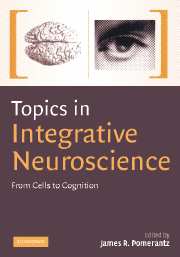Book contents
- Frontmatter
- Contents
- List of contributors
- Preface
- Overview of neuroscience, choice and responsibility
- 1 Neuroscience, choice and responsibility
- PART I HIGHER ORDER PERCEPTION
- Overview of higher order visual perception
- 2 Attention as an organ system
- 3 Cortical dynamics and visual perception
- 4 Cortical mechanisms of visuospatial attention in humans and monkeys
- PART II LANGUAGE
- PART III MEMORY SYSTEMS
- PART IV SENSORY PROCESSES
- Index
- Plate section
- References
2 - Attention as an organ system
Published online by Cambridge University Press: 08 August 2009
- Frontmatter
- Contents
- List of contributors
- Preface
- Overview of neuroscience, choice and responsibility
- 1 Neuroscience, choice and responsibility
- PART I HIGHER ORDER PERCEPTION
- Overview of higher order visual perception
- 2 Attention as an organ system
- 3 Cortical dynamics and visual perception
- 4 Cortical mechanisms of visuospatial attention in humans and monkeys
- PART II LANGUAGE
- PART III MEMORY SYSTEMS
- PART IV SENSORY PROCESSES
- Index
- Plate section
- References
Summary
Introduction
Attention is relatively easy to define subjectively as in the classical definition of William James (1890) who said: “Everyone knows what attention is. It is the taking possession of the mind in clear and vivid form of one out of what seem several simultaneous objects or trains of thought.”
However, this subjective definition does not provide hints that might lead to an understanding of attentional development or pathologies. The theme of our chapter is that it is now possible to view attention much more concretely as an organ system. We follow the Webster dictionary definition of an organ system: “An organ system may be defined as differentiated structures in animals and plants made up of various cell and tissues and adapted for the performance of some specific function and grouped with other structures into a system.”
We believe that viewing attention as an organ system aids in answering many perplexing issues raised in cognitive psychology, psychiatry, and neurology. Neuroimaging studies have systemically shown that a wide variety of cognitive tasks can be seen as activating a distributed set of neural areas, each of which can be identified with specific mental operations (Posner & Raichle, 1994, 1998). Perhaps the areas of activation have been more consistent for the study of attention than for any other cognitive system. We can view attention as involving specialized networks to carry out functions such as achieving and maintaining the alert state, orienting to sensory events, and controlling thoughts and feelings.
- Type
- Chapter
- Information
- Topics in Integrative NeuroscienceFrom Cells to Cognition, pp. 31 - 61Publisher: Cambridge University PressPrint publication year: 2008
References
- 89
- Cited by



